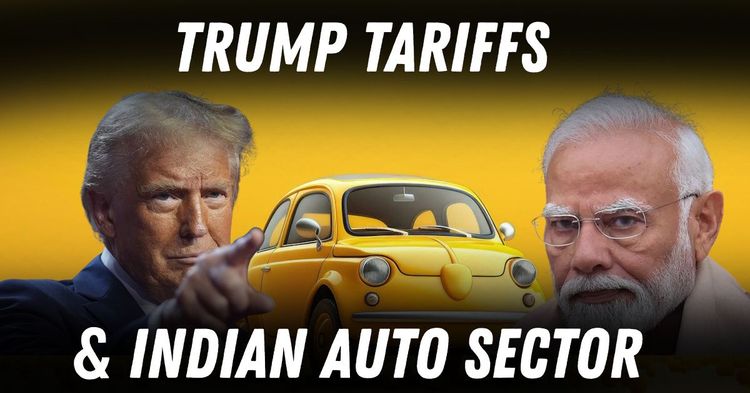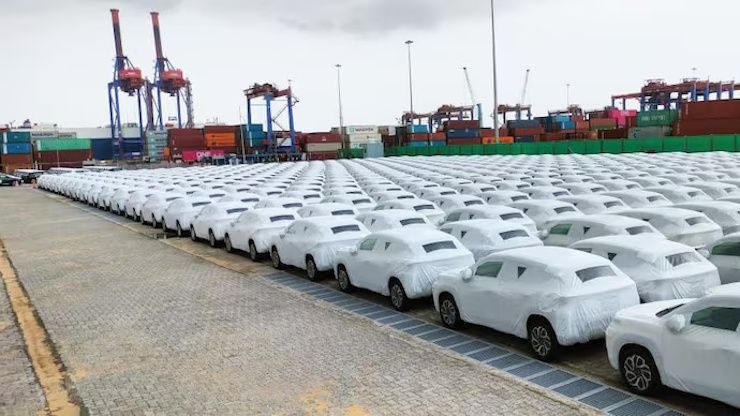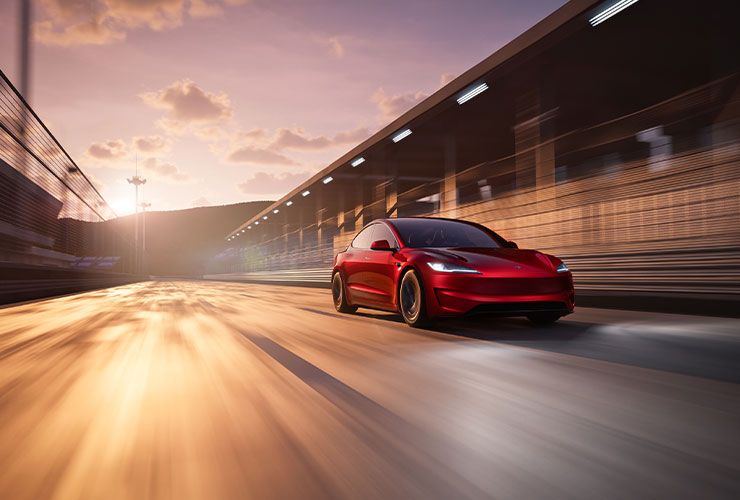How New U.S. Tariffs Will Shake Up India’s Auto Industry


President Donald Trump’s recent decision to impose 25–26% tariffs on Indian automotive imports has sent shockwaves through India’s automobile industry. While direct exports of vehicles to the U.S. are relatively low, the impact is being felt by auto component suppliers and luxury car manufacturers. With India actively negotiating trade concessions to soften the blow, the industry is bracing for a new reality.

From April 3, 2025, a 25% tariff on fully assembled cars and auto parts came into effect, directly impacting India’s $6.8 billion auto component exports to the U.S. The effects are mixed:
• Auto component suppliers are among the hardest hit, with 29% of India’s global auto parts exports ($2.2 billion in 2024) now facing higher costs. Companies like Sona BLW Precision Forgings and Bharat Forge, which rely heavily on U.S. business, are particularly vulnerable.
• Passenger vehicles exported from India to the U.S. account for just 0.13% of India’s $7 billion car exports, meaning mass-market brands won’t see much immediate impact.
• Luxury carmakers, particularly Tata Motors' Jaguar Land Rover (JLR), could face indirect risks, as 33% of JLR’s FY25 volumes are tied to the U.S. market.
The auto component industry in India, which employs over five million people, is feeling the heat. With the new tariffs in place, many manufacturers may have to lower their prices to remain competitive.
U.S. importers are unlikely to absorb the additional costs, meaning Indian companies may be forced to reduce their prices by 8–25%, affecting their profitability. India already holds just 2% of the U.S. auto parts import market, lagging behind Mexico (39%) and China (12%). With the tariffs increasing costs, Indian companies could lose further ground to global competitors.
Company U.S. Revenue Exposure Stock Decline (March 27, 2025)
Sona BLW 40% -4.4%
Bharat Forge 30% -3.4%
Motherson Group 18% -6.4%
The tariff situation comes at a time when India has lowered EV import duties from nearly 100% to 30% to facilitate a trade deal with the U.S. This move has sparked debate across the industry.

The reduction in tariffs could pave the way for Tesla and other foreign EV brands to enter India with imported models, boosting EV adoption. However, it could also hurt Indian EV manufacturers like Tata Motors and Mahindra, which have invested heavily in local production under India’s government-backed incentive schemes. The influx of imported EVs could create tough competition for homegrown brands.
Despite concerns, India’s auto industry is not entirely reliant on exports. Only 15% of total car production is sent overseas, insulating most manufacturers from immediate shocks. Additionally, labour costs in India remain significantly lower than in the U.S., helping maintain production efficiency.
With U.S. tariffs creating hurdles, India is actively diversifying its trade partnerships. New corridors, such as the India-Middle East-Europe Economic Corridor, are being developed to bypass high-tariff routes. Indian automakers are also looking at Europe, the Middle East, and Africa as alternative export markets.
To ease the pressure on Indian manufacturers, the government has offered to lower tariffs on 50% of U.S. imports ($23 billion), covering sectors such as agriculture and premium motorcycles like Harley-Davidson. This is part of ongoing negotiations aimed at securing exemptions for key Indian industries.
While the immediate impact of tariffs may seem limited, the long-term effects could trickle down to Indian car buyers. With foreign manufacturers entering India more aggressively, competition is likely to increase, especially in the EV segment. At the same time, Indian component manufacturers facing cost pressures may pass some of the burden onto domestic automakers, potentially leading to higher prices for locally manufactured cars.
Despite these challenges, India’s auto industry has structural strengths that may help it navigate this phase. Foreign companies relocating from China to India for manufacturing could create new investment opportunities, and the government's push towards localised EV production and incentives could ensure that Indian brands remain competitive.
Trump’s tariffs have undoubtedly shaken up India’s auto sector, but as manufacturers recalibrate strategies, the industry could find ways to turn this challenge into a long-term opportunity.